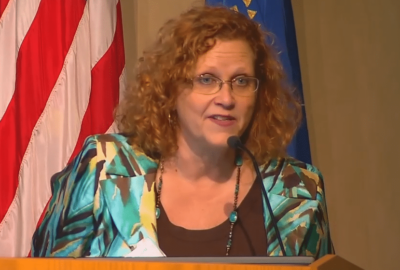
Treasury stands up human capital dashboard to track aging workforce
The Treasury Department has launched an enterprisewide dashboard to identify component areas that would be understaffed in a massive wave of retirements.
With nearly half of the IRS workforce eligible to retire in the next two years, the Treasury Department has launched an enterprisewide dashboard to identify component areas that would be understaffed in a massive wave of retirements.
While predictions of a looming governmentwide retirement wave have yet to materialize — and may never come to pass — Karen Weber, Treasury’s deputy risk officer, said the department still needs a plan in the event, however remote, that employees leave government service en masse.
As part of Treasury’s multi-year strategic plan, the department has launched an enterprisewide human capital dashboard to give managers a heads-up about what Weber called “red flashing lights,” or cases where a particular bureau or office has a high percentage of retirement-eligible employees.
“We all say workforce management is one of our top risks … We knew we had a time ton of workforce data,” Weber said Tuesday at an enterprise risk management conference hosted by the Association for Federal Enterprise Risk Management. “We got together a working group and said, ‘What do you managers need out of this? What could [ERM] use from this?’”
Department data has already pointed to an aging IRS workforce. Commissioner Chuck Retting told members of the Senate Finance Committee in April that about 45% of the IRS’s total workforce will be eligible to retire within the next two years, and less than 3% of its workforce is age 30 or younger.
The creation of the dashboard, Weber said, is part of an effort to enable more data-driven decision-making through Treasury’s ERM office.
Last year, as part of the rollout of its new strategic plan, Weber said Treasury asked components not just to develop goals, but also a method of tracking progress.
Meanwhile, the IRS is taking another crack at a long-term IT modernization strategy to succeed where earlier efforts fell short. The agency is asking Congress for nearly $3 billion over the next six years to retire legacy systems and move to cloud computing.
Weber said the IRS modernization plan remains one of Treasury’s top priorities, with the acknowledgment that “there are risks to implementing that” strategy. However, she said Treasury’s chief risk officer and chief information officer have worked together with the IRS to make sure the project stays on track.
While the Trump administration, through its Federal Data Strategy, has set its sights on empowering agency chief data officer and chief evaluation officers, Jenny Rone, the assistant inspector general for data science at the Agriculture Department’s IG office, said it’s only the latest evolution of a common practice in her office.
“We’ve been using data for a long time. It’s just that now we have the ability to broaden our horizons. We get to look at what data is really out there … and how do we really truly collect that,” Rone said.
With the growing adoption of common data standards, Rone said the OIG can now combine data sets to gain new insights. Agency functions like human capital and financial management, she said, already have a wealth of reliable data for analytics.
Related Stories

It’s been a big year so far for the government’s push toward better data governance

NIH to hire chief data science strategist as part of its drive to harness big data
But without taking steps to change the culture of an agency, Rone said agency employees might not make the most out of their data analytics offices.
Without knowing what’s possible, she said employees ask her office for a map of regional offices, for example, or a simple bar chart.
“Because we haven’t educated [them] as well as we probably could have, what happens is that your data analytics shop becomes a help desk ticket processor,” Rone said.
The fundamental misunderstanding, she said, happens when employees don’t consult their data science team to help answer questions. Instead, they come with the mindset of, “I [already] know my solution, you just give it to me.”
In an ideal scenario, Rone said agency data science offices should act more like internal consultants.
“You help think about what data is available, what data you might be able to get and understand the objective, so that you can help them ask different questions in different ways and support that ask,” she said.
Copyright © 2024 Federal News Network. All rights reserved. This website is not intended for users located within the European Economic Area.
Jory Heckman is a reporter at Federal News Network covering U.S. Postal Service, IRS, big data and technology issues.
Follow @jheckmanWFED



